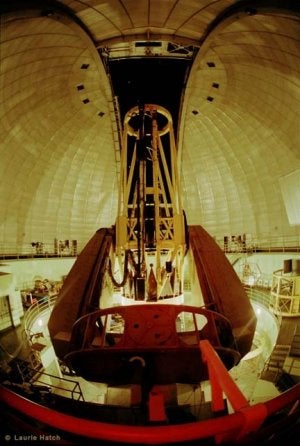This activity leads you through the process Fischer’s team uses to find a planet this way. First, stars within a field must be evaluated for their ability to support a planet. Some stars can be ruled out immediately by their known physical characteristics. Close binary stars, for example, aren’t good candidates for hosting a stable planetary system. Nor are stars that are too young or too old.
After some potential candidates stars are identified, you can go to your telescope and conduct your initial observations. Using a large research telescope — such as the 3-meter Shane Telescope at Lick Observatory, which Fischer’s group uses — you observe the spectra of your candidate stars to evaluate their potential for further observations. Some stars will not yield good enough spectral lines to determine whether a planet exists around it. But some stars will have good spectra, and you can continue to observe those over months or years to look for velocity changes (“wobbles”) in its spectra over time.










